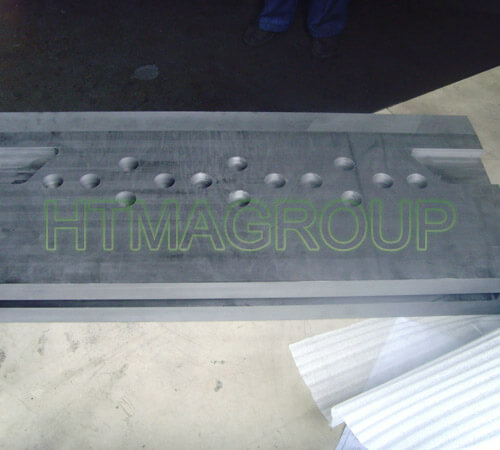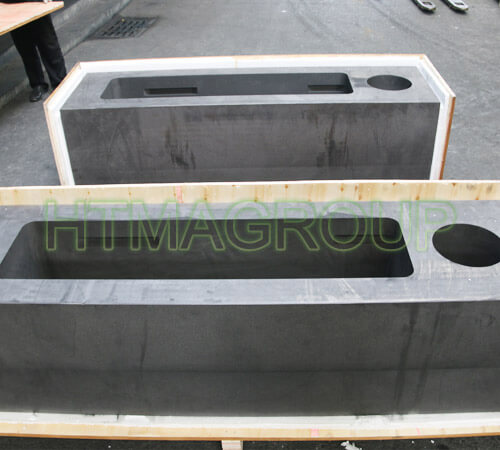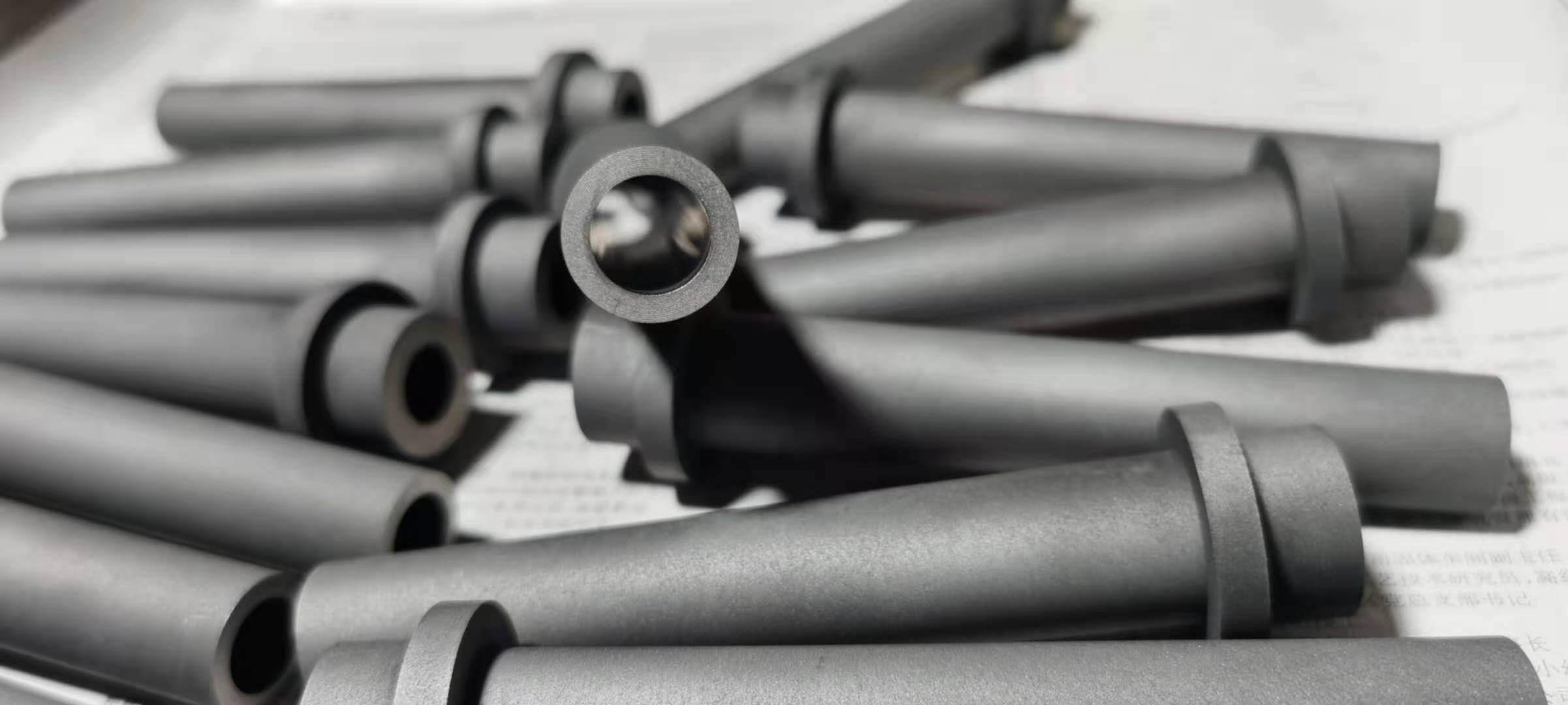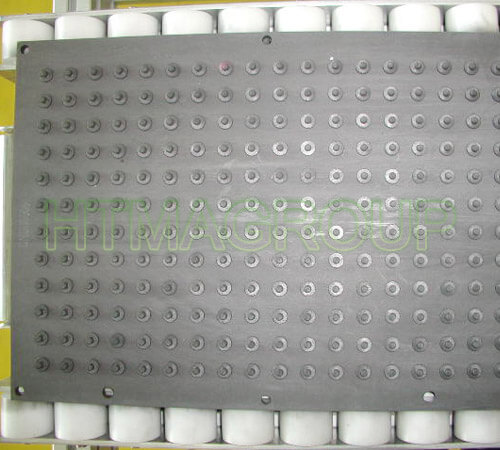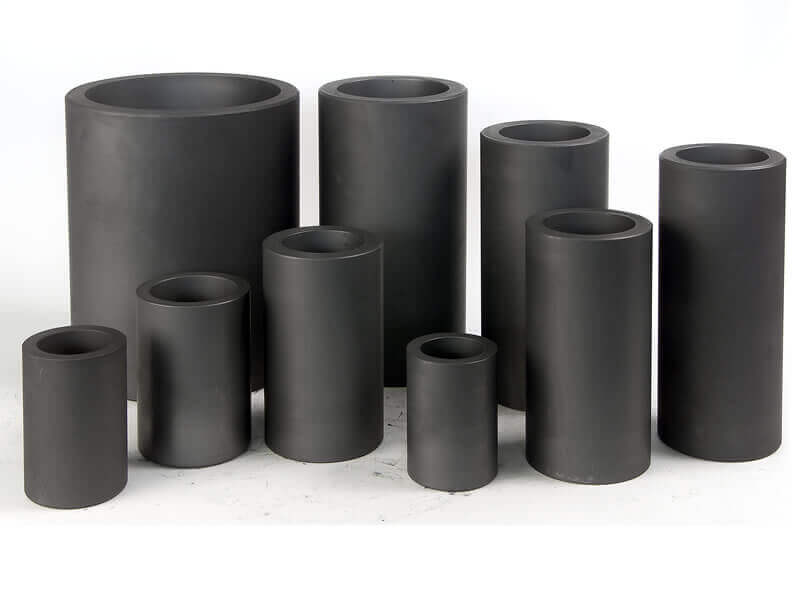CNC machining graphite parts
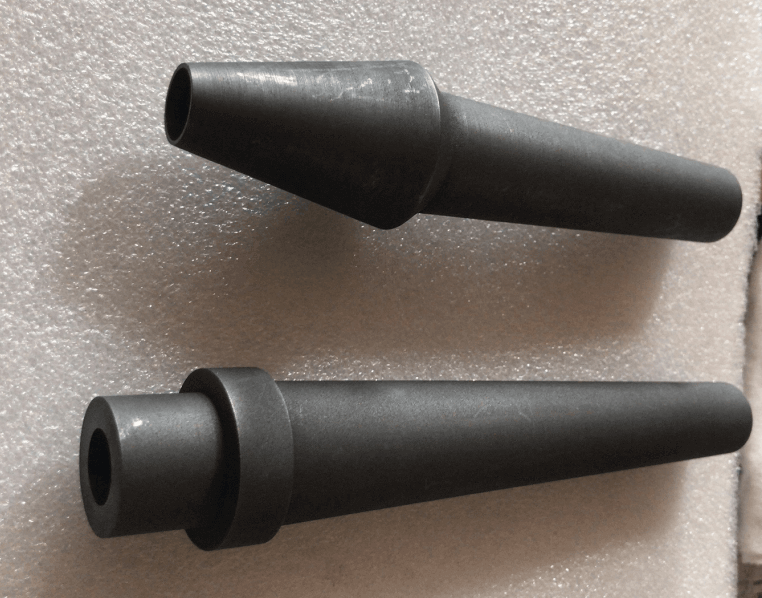
Our company can supply the CNC machining graphite parts,graphite mould with stable and reliable quality, We specialized in precise graphite machining. Tolerances and surface processing as per customers’ special requests. Applications: automotive, aerospace, semiconductor, chemical, metallurgical, nuclear and electronics industries…
Detailed description
Our company can supply the CNC machining graphite parts, graphite mould, products with stable and reliable quality. Graphite moulds is widely used in the automotive, aerospace, semiconductor, chemical, metallurgical, nuclear and electronics industries.
Graphite parts including graphite rods, graphite plates, graphite blocks, graphite crucible, graphite pipes, graphite tubes, graphite vanes, graphite brush…
We specialized in precise graphite machining. We can control strict tolerances and produce with different surface processing as per customers’ special requests. And We are capable of machining different types of graphite, such as graphite rods, graphite blocks, graphite boats, graphite pipes, graphite plates, graphite bearing, graphite heating elements, Vacuum heating furnace, Silicon thermal field, graphite crucibles and other parts from a wide range of applications.
Mould is an extremely widely used basic process equipment in industrial production, and the mould industry is the basic industry of the national economy. In modern industrial production, product parts are widely used in stamping, forging forming, die-casting forming, extrusion forming, plastic injection or other forming processing methods, matched with forming dies, so that blanks can be formed into parts that meet product requirements. The various tools and products used in our daily production and daily life, ranging from the base of the machine tool, the body shell, to a small screw, button and the shell of various household appliances, are all closely related to the mold. The shape of the mold determines the appearance of these products, and the processing quality and precision of the mold also determines the quality of these products. In recent years, the mold industry has developed rapidly. Graphite materials, new processes and increasing mold factories continue to impact the mold market. Graphite has gradually become the material of choice for mold making with its good physical and chemical properties.
Excellent performance of graphite mold
1. Excellent thermal and electrical conductivity
2. Very good thermal stability and heat shock resistance, such as low linear expansion coefficient
3. Resistant to chemical corrosion and not easy to react with most metals
4. At high temperature (most copper matrix matrix sintering temperature is above 800℃) the strength increases with the increase of temperature
5. Has good lubrication and anti-wear properties
6. Easy to process, good machining performance, can be made into molds with complex shapes and high precision
Application of graphite mold
At present, graphite molds have been widely used mainly in the following aspects:
1. Graphite molds for non-ferrous metal continuous casting and semi-continuous casting: In recent years, advanced production methods such as direct continuous (or semi-continuous) manufacturing of bars or tubes from molten metal are being promoted at home and abroad. Domestically, this method has been adopted in copper, copper alloy, aluminum, and aluminum alloy. Artificial graphite is considered as the most suitable material for continuous casting or semi-continuous casting of non-ferrous metals. Production practice has proved that due to the graphite mold, the thermal conductivity is good (the thermal conductivity determines the solidification speed of the metal or alloy), the self-lubricating performance of the mold and other factors, not only increase the casting speed, but also due to the size of the ingot Accurate, smooth surface, uniform crystal structure, can be directly processed in the next procedure. This not only greatly improves the yield rate and reduces the loss of waste products, but also greatly improves the product quality. There are two continuous casting methods: vertical continuous casting and horizontal continuous casting.
2. Moulds for pressure casting: Artificial graphite materials have been successfully used for pressure casting of non-ferrous metals. For example, zinc alloy and copper alloy castings produced by pressure casting molds made of artificial graphite materials have been used in automobile parts.
3. Graphite molds for centrifugal casting: Graphite molds have been successfully applied to centrifugal casting. The United States has used artificial graphite molds with a wall thickness of more than 25 mm for centrifugal casting of bronze bushings. In order to prevent the burning of the artificial graphite mold, certain anti-oxidation measures can be taken. After casting a certain number of castings, if the inner surface of the mold is found to be burnt, the size of the inner hole of the mold can be enlarged to be used for casting large-size casing.
4. Hot pressing mold: Artificial graphite hot pressing mold used for pressure sintering of cemented carbide has the following characteristics: First, if the pressing temperature is increased to 1350-1450 degrees, the required unit pressure can be reduced to 67-100 kgf/cm² (that is, 1/10 of the cold pressing pressure) is enough; second, pressing and heating are carried out in the same process, and a compact sintered body can be obtained after a short time of sintering.
5. Molds for glass molding: Because graphite materials are chemically stable, they are not easy to be infiltrated by molten glass, and will not change the composition of the glass. Graphite materials have good thermal shock resistance and small changes in size with temperature. It has become an indispensable mold material in manufacturing. It can be used to make molds for glass tubes, elbows, funnels and other various shaped glass bottles.
6. Sintering molds and other diamond sintering molds: The sintering molds and brackets for transistors can be manufactured by using the characteristics of extremely small thermal deformation of artificial graphite materials. It is now widely used and has become an indispensable material for the development of the semiconductor industry. In addition, graphite molds are also used in cast iron molds, durable molds for various non-ferrous metals, cast steel molds, heat-resistant metals (titanium, zirconium, molybdenum, etc.), and aluminum for welding rails. Hot welding molds, etc. Graphite molds for hot-pressed sintered diamond tools play the dual role of heating element and mold support during the manufacturing process of diamond tools. The quality of graphite molds directly affects the dimensional accuracy, appearance and shape of diamond tools. Hot-pressing sintering process requirements: the temperature reaches (1 000±2) ℃, the molding pressure is 16-50 MPa, the heat preservation time is 15-30 min, and the environment is non-vacuum. Under this working condition, the graphite mold of the forming and heating element is required to have conductivity, high electrical resistivity, and sufficient mechanical strength. It also needs to have good oxidation resistance and a long service life to ensure diamond The dimensional accuracy and excellent performance of the tool. At present, graphite mold materials used in the manufacture of diamond tools in western developed countries are mainly graphite materials with ultrafine particle structure, high purity and high graphitization degree. The average particle size is required to be less than 15μm, or even less than 10μm, and the medium pore size is less than 2μm. The graphite mold made of this carbon raw material has small porosity, compact structure, high surface finish, strong oxidation resistance, and the average service life can reach 30-40 times. Diamond molds require high material hardness, good oxidation resistance, and high processing accuracy. The use of high-quality graphite raw materials greatly extends the service life of the mold and improves the oxidation resistance.
Electric spark (EDM) machining
Moulds are increasingly becoming the main process equipment for industrialized mass production in industrial fields such as home appliances, automobiles, electromechanics, and aerospace, and they undertake the processing and production of 60%-90% of product parts in these industries. In recent years, high-speed milling has broken through the limitations of traditional milling that are difficult to process high-hardness, high-strength, and high-toughness mold materials. However, EDM has high machining accuracy and surface quality, and a wide range of machining, especially in the mold cavity machining of complex, precise, thin-walled, narrow-slit, and high-hard materials. The advantage is unmatched by high-speed milling. Electrical discharge machining will still be the main method of mold cavity processing. As graphite electrodes (compared to copper) have the advantages of less electrode consumption, fast electrical discharge machining speed, good machining performance, light weight, and low thermal expansion coefficient, they have gradually replaced copper electrodes and become the mainstream of electrical machining electrodes. Compared with copper, graphite electrodes have the advantages of low consumption, fast discharge speed, light weight and low thermal expansion coefficient, so they gradually replace copper electrodes and become the mainstream of electrical discharge machining electrodes. In contrast, graphite electrode materials have the following advantages:
1. Fast speed: Graphite discharges 2-3 times faster than copper, and the material is not easy to deform. It has obvious advantages in the processing of thin rib electrodes. The softening point of copper is about 1000 degrees, which is easily deformed by heating. The sublimation temperature of graphite is About 3650 degrees, in comparison, the thermal expansion coefficient of graphite material is only 1/30 of that of copper;
2. Light weight: The density of graphite is only 1/5 of that of copper. When large electrodes are used for electrical discharge machining, it can effectively reduce the burden on machine tools (EDM) and is more suitable for large mold applications;
3. Low loss: because the spark oil contains C atoms, during the electrical discharge machining, the high temperature causes the C atoms in the spark oil to be decomposed, and a protective film is formed on the surface of the graphite electrode to compensate for the loss of the graphite electrode;
4. No burr: After the copper electrode is processed, the burr needs to be manually removed, but there is no burr after the graphite is processed, which not only saves a lot of cost and manpower, but also makes it easier to realize automated production;
5. Easy to polish: Since the cutting resistance of graphite is only 1/5 of that of copper, it is easier to manually grind and polish in operation;
6. Low cost: Due to the continuous increase in copper prices in recent years, the price of homogeneous graphite is lower than that of copper in all aspects; the price of graphite products with the same volume is 30 to 60% lower than that of copper. Stable, short-term price fluctuations are relatively small.
Graphite mold processing technology
First of all, it is designed by the mold designer according to the requirements of the product (parts), and the drawings are drawn, and then the technical workers pass various mechanical processing (such as lathes, planers, milling machines, grinders, electric sparks, Wire cutting and other equipment) make every part on the mold, and then assemble and debug until a qualified product can be produced.
Current status and development of graphite molds
Nowadays, the graphite mold industry plays a vital role in human life and development. The development of many industrial sectors (such as electromechanics, automobiles, home appliances, light industry, electrical instruments, communications, ordnance, etc.) depends on the technological improvement and development of the mold industry , All countries in the world have invested a lot of manpower and financial resources to develop the graphite mold industry. SGL in Germany and Toyo Carbon in Japan have achieved a leading position in the international graphite mold industry. my country also attaches great importance to the development of the mold industry. The level of mold production technology has become an important indicator to measure the level of a country’s product manufacturing level, because molds to a large extent determine product quality, efficiency and new product development capabilities . Since 1997, relevant Chinese departments began to pay attention to and support the development of the graphite mold industry and vigorously support the development of Chinese local enterprises in the graphite mold industry. Now they have achieved good results and contributed to China’s export foreign exchange income. In view of the future development trend of the mold industry, whoever can complete the mold production in the shortest time will win customers and the market. Graphite molds (graphite electrodes) have established an important leading position and future development trend in the mold industry with their superior performance in all aspects.
There are different raw materials of graphite, its isostatic graphite material, moulded graphite material, vibration graphite material, extruted graphite material, mechanical graphite material and carbon brush material.
Our Products were sold throughout the country and exported to Europe, America, Southeast Asia and other countries and regions which enjoy a high reputation all over the world.
We hope to establish a good business relationship with you; we will serve you with the best quality, best delivery time and best solutions

